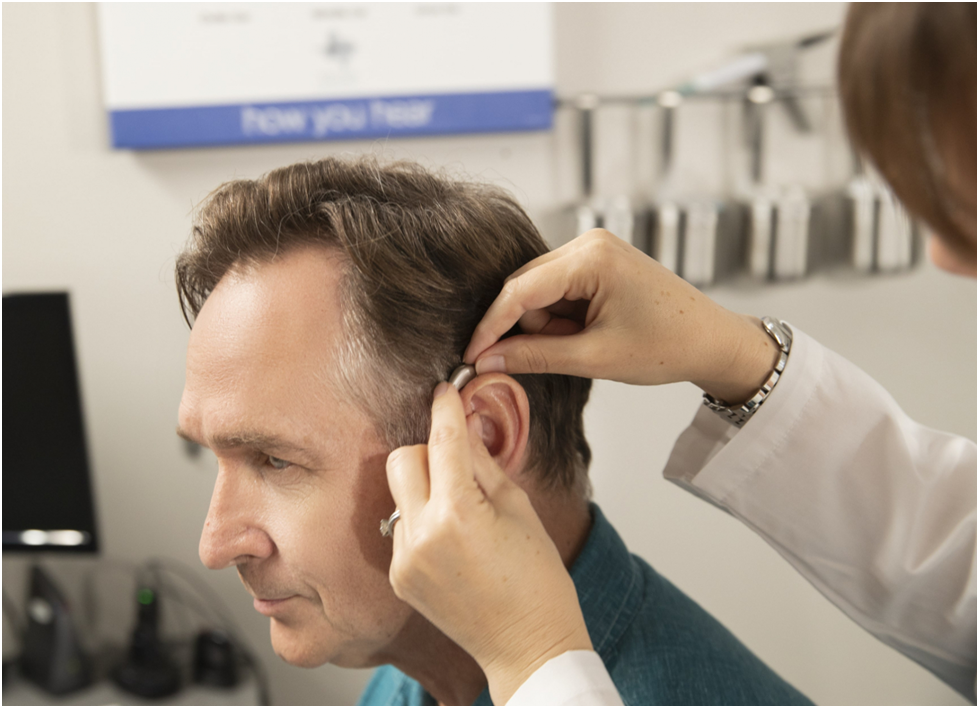
The Importance of Customized Hearing Aid Fittings: Tailoring Solutions for Individual Needs
Hearing loss is a prevalent and often overlooked health concern affecting millions of people worldwide. Fortunately, advancements in technology have led to the development of hearing aids, offering a lifeline to those grappling with auditory challenges. However, the effectiveness of these devices greatly depends on one critical factor: the precision of the fitting process. Customized hearing aid fittings have emerged as a cornerstone in addressing the diverse and unique needs of individuals with hearing impairments, ensuring not only comfort but also optimal performance.
Understanding the Diversity of Hearing Loss
Hearing loss is a multifaceted condition, ranging from mild to profound, and can affect various frequencies. Some individuals may have difficulty hearing high-pitched sounds, while others may struggle with low-frequency sounds. Additionally, the configuration of hearing loss can vary, with some experiencing a gradual decline across frequencies and others having a more abrupt loss in specific ranges. Recognizing this diversity is crucial in tailoring solutions that cater to the specific needs of each individual.
Generic vs. Customized Hearing Aids
Generic or one-size-fits-all hearing aids, though readily available, often fall short in addressing the unique characteristics of an individual’s hearing loss. These off-the-shelf solutions may provide a basic level of amplification, but they lack the precision needed to optimize hearing in diverse environments. Customized hearing aids, on the other hand, are crafted based on a thorough assessment of the user’s hearing profile.
The Importance of Professional Assessment
The journey towards effective hearing aid fittings begins with a comprehensive hearing assessment conducted by a qualified audiologist. This assessment not only determines the degree and configuration of hearing loss but also considers lifestyle factors and specific listening needs. Understanding the nuances of an individual’s hearing profile enables audiologists to recommend the most suitable hearing aid type and configuration.
Tailoring Solutions for Individual Needs
Customized hearing aid fittings involve the meticulous adjustment of various parameters to match the user’s unique hearing requirements. Key factors considered in this process include:
- Amplification Levels: Adjusting the amplification levels is critical in ensuring that sounds are audible without being uncomfortably loud. Customized fittings allow audiologists to fine-tune these levels based on the individual’s specific hearing thresholds.
- Frequency Response: Different hearing losses affect various frequencies, and customization allows for precise adjustments in specific frequency bands. This ensures that the hearing aid addresses the user’s specific areas of difficulty.
- Speech Processing: Customized fittings take into account the user’s ability to process speech. This involves adjusting settings to enhance speech clarity, especially in noisy environments, where individuals with hearing loss often struggle the most.
- Comfort and Fit: Physical comfort is paramount in ensuring long-term adherence to hearing aid usage. Customized fittings consider the size and shape of the user’s ear canal, ensuring a snug fit that minimizes discomfort and prevents feedback or whistling sounds.
- Environmental Adaptation: Individuals lead varied lifestyles, and their hearing aids should adapt to different environments. Customization allows for the programming of settings that automatically adjust to different sound environments, providing optimal hearing in various situations.
Benefits of Customized Hearing Aid Fittings
- Improved Speech Understanding: Customized fittings enhance the ability to understand speech, particularly in challenging listening situations. This is crucial for effective communication in both social and professional settings.
- Enhanced Comfort and Wearability: A properly fitted hearing aid ensures comfort, promoting consistent usage. This is essential for reaping the long-term benefits of improved communication and overall well-being.
- Increased User Satisfaction: Customized fittings lead to higher user satisfaction as individuals experience a personalized solution that caters to their specific needs. This, in turn, encourages continued use of the hearing aid, maximizing its effectiveness.
- Better Quality of Life: Hearing loss can significantly impact an individual’s quality of life, affecting relationships, work, and overall well-being. Customized hearing aid fittings play a pivotal role in restoring a sense of normalcy and facilitating active participation in daily activities.
Challenges and Solutions
While the importance of customized hearing aid fittings is undeniable, several challenges exist in ensuring widespread access to these personalized solutions. Cost considerations, limited availability of qualified audiologists, and awareness gaps among individuals with hearing loss are some of the hurdles that need to be addressed.
- Cost Considerations: Customized hearing aids can be more expensive than their generic counterparts. Advocacy for insurance coverage and financial assistance programs can help alleviate the financial burden on individuals seeking personalized solutions.
- Access to Qualified Audiologists: A shortage of qualified audiologists in some regions can limit access to customized fittings. Addressing this issue involves promoting audiology education, expanding training programs, and advocating for policies that support the growth of the audiology profession.
- Public Awareness: Many individuals with hearing loss may not be aware of the benefits of customized hearing aid fittings. Public awareness campaigns, both online and offline, can play a crucial role in educating the public about the importance of seeking professional help and the advantages of personalized hearing solutions.
Conclusion
Customized hearing aid fittings are a cornerstone in the journey towards addressing the diverse and unique needs of individuals with hearing impairments. The precision offered by personalized solutions not only enhances comfort and wearability but also significantly improves the overall effectiveness of hearing aids. As technology continues to advance and awareness grows, it is essential to prioritize the promotion of customized fittings as a standard practice in the management of hearing loss. By doing so, we can empower individuals to regain control of their auditory experiences, fostering improved communication, social engagement, and overall quality of life.







